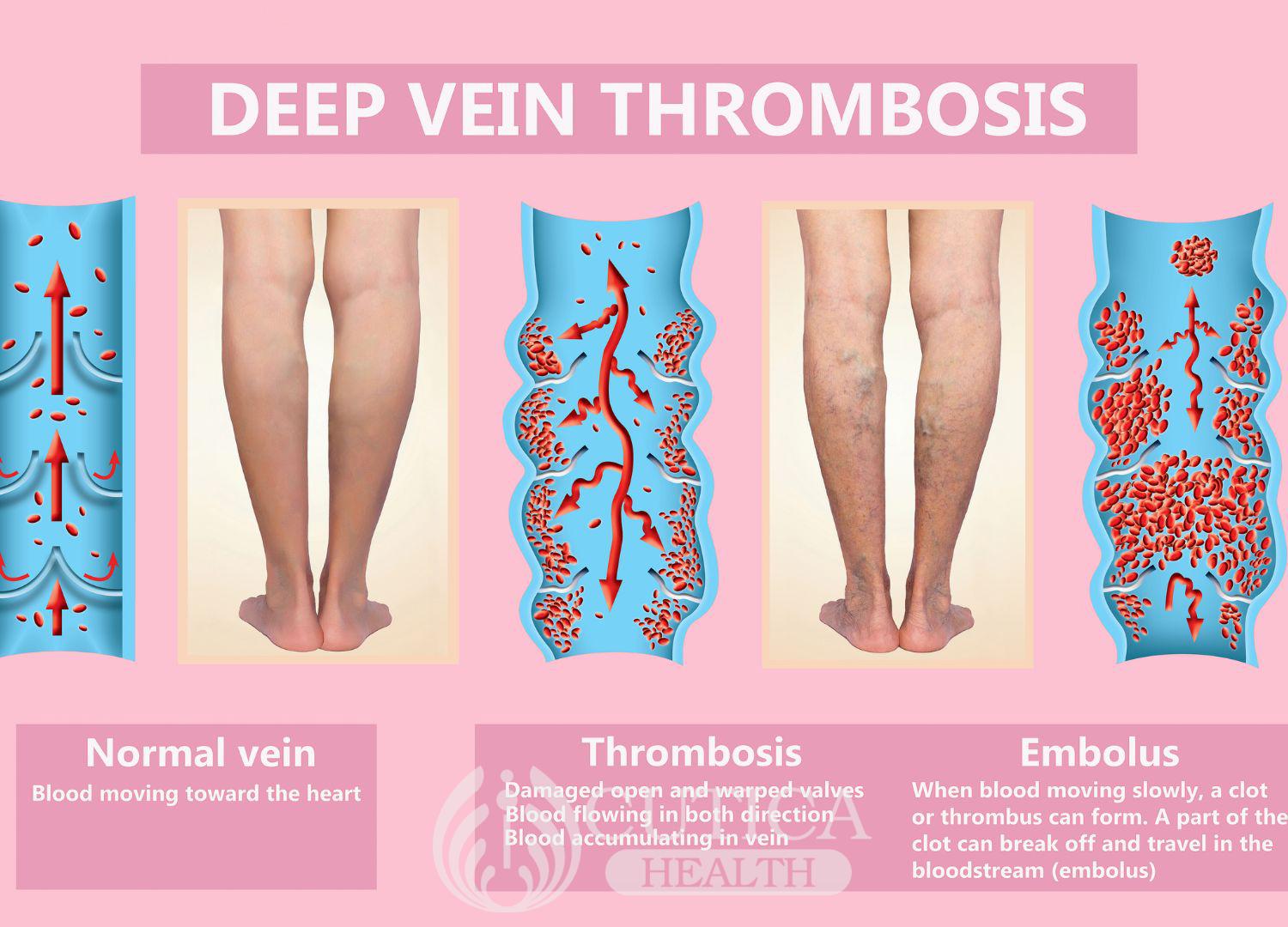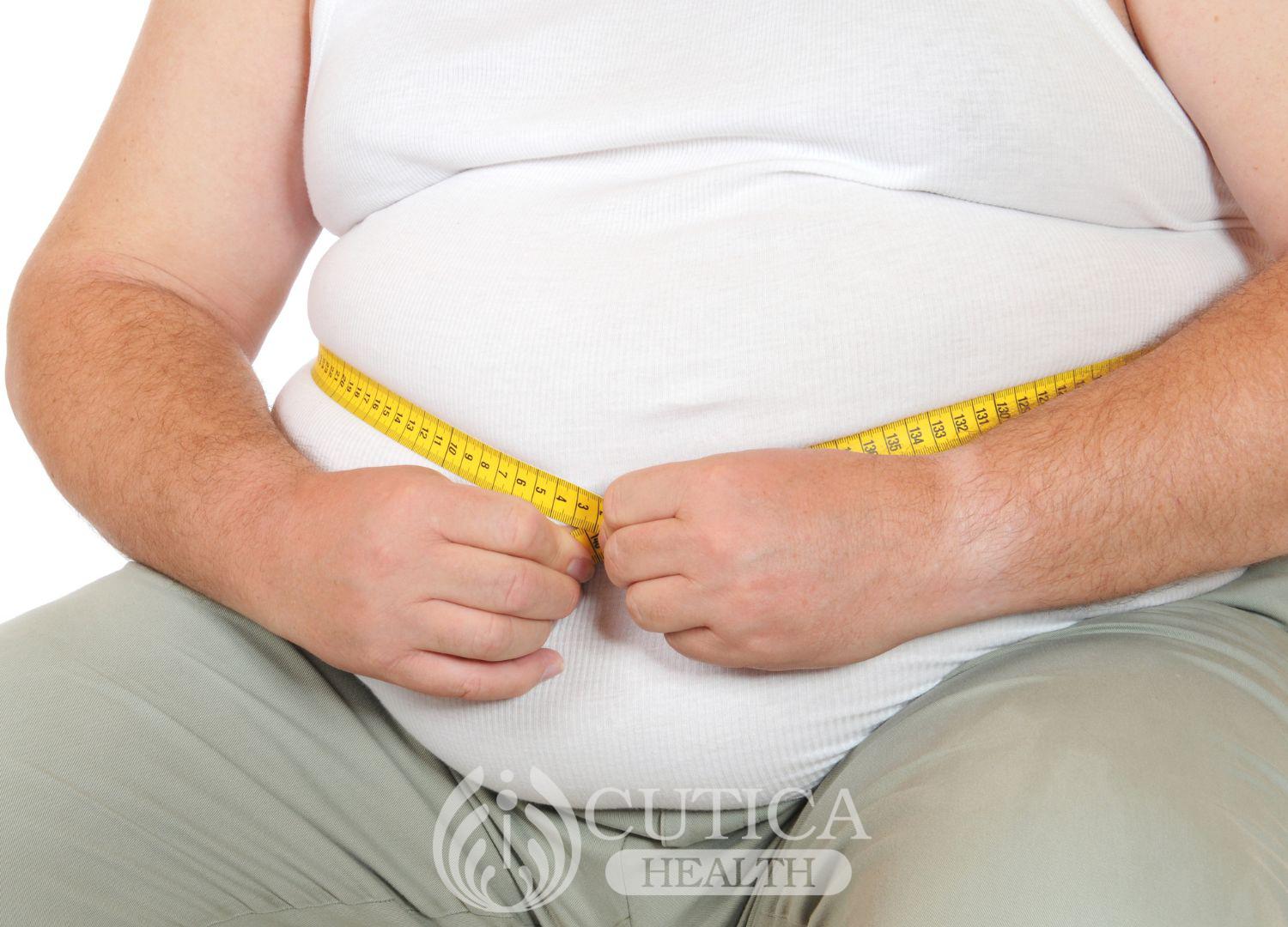
Blood is free flowing, with a water-like consistency. In this state, it is able to easily circulate in our bodies, supplying oxygen and other vital nutrients.
In the presence of an injury, there is activation of a process that leads to the clotting of blood in order to stop bleeding. This is a normal process.
However, sometimes, an unwanted clot may form in a vein deep within the leg and this is known as deep vein thrombosis (DVT).

This condition is worrisome because it can be dangerous.
Sometimes, this clot can break off and travel through the bloodstream to the lungs leading to a potentially fatal condition called pulmonary embolism (PE). Commonest symptomsof clots in the lungs include chest pain and shortness of breath .
Causes of DVT
Some people are more likely to get DVT than others. Some of the risks are:
- Overweight
- History of DVT in the past
- Age > 60
- Taking oestrogen containing contraceptive pills or hormone replacement therapy (HRT)
- History of cancer
- History of heart failure

History of varicose veins
- Family history of DVT
- Immobilisation for long periods, e.g., post-surgery
- Smoking
- Long distance travel
- Pregnancy
- Dehydration
What Are The Common Symptoms?
Symptoms of DVT include:
- Throbbing or cramp-like pain in leg
- Increased warmth around painful area
- Swelling in leg
- Skin discolouration around the affected area
- Hard, tender, swollen veins in affected area
Treatment
At the hospital, a number of tests will be done on you including a scan of your legs and chest.
If DVT or lung clot is suspected, a blood thinning agent will be administered.
You may be placed on blood thinning medications for some months.
Surgery to break the clots or put a filter into your vein may be considered depending on severity of condition.
How to Prevent DVT
Reduce your risk of DVT by doing the following:
- Lifestyle modification: This includes eating a healthy diet, stop smoking, cut down alcohol, and stay active. These steps will go a long way in helping you to maintain a healthy weight.
- Stay hydrated by drinking lots of fluids.
- Avoid long periods of immobilisation. Move around every hour or two rather than sitting still for a long time such as during long distance travel.

Talk to you doctor about how to safely resume physical activity early after surgery.
- Ask your doctor how to prevent DVT if admitted for other reasons.
What to do after DVT?
If you've just been managed for DVT, it is important to pay attention to the tips below:
- The affected leg should be raised when sitting.
- Take regular walks once approved by your doctors.
- Do not take flights till about 2 weeks after commencement of blood thinners.
- Do not take blood thinners with the following: cranberry juice, alcohol.
- Check with your doctor before taking any other medication as some medications like NSAIDS (Aspirin, Ibuprofen, etc.) and some antibiotics that can affect the way blood thinner works.
- If you suddenly develop headaches, blood in stool or urine, etc., quickly go to the hospital as this can be a serious side effect of blood thinners.
- Use compression stockings to help with blood circulation and prevention of DVT in people with high risk. These socks can also be worn by people who are immobilised perhaps due to surgery or simply bed bound.
SUMMARY

DVT is a serious condition that can lead to sudden death. Many people are unaware of the signs and symptoms or simply brush it aside as a simple leg cramp or a passing chest pain. Many lives have been lost due to this knowledge gap. Chest pain with shortness of breath, especially in the presence of any of the above stated risk factors is an emergency requiring urgent medical attention and intervention.












